With a variety of pizza styles circulating worldwide, it makes you wonder how to layer ingredients on a pizza properly. Of course, not every pizza variant is the same. Some are made in an upturn order, while others follow the toppings on the top arrangement.
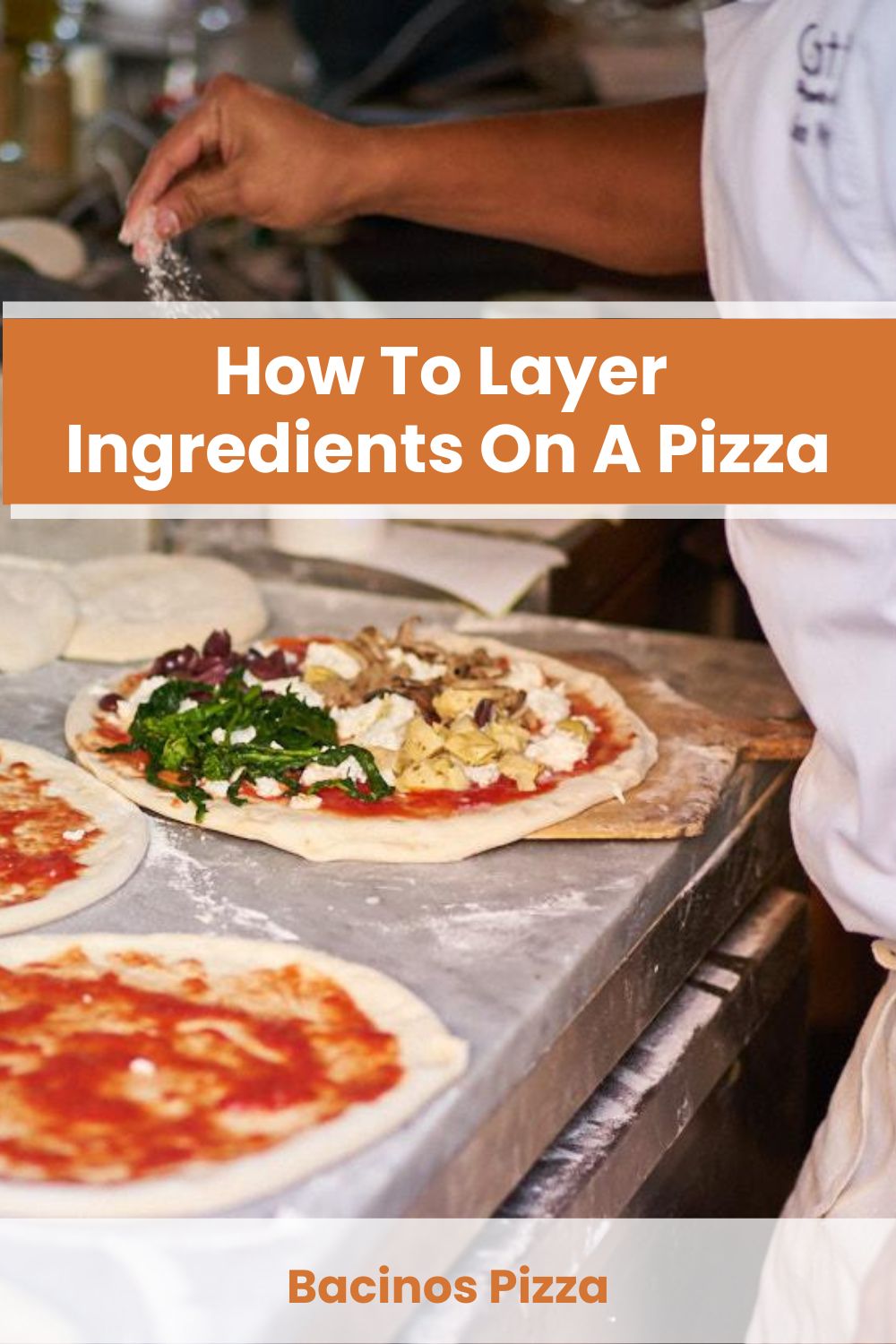
End your internal debate today and discover the order of ingredients to put on the crust. Here are the five main steps to bring your A-game in pizza making.
Pizza Crust Preparation
It is a no-brainer to start with a crust before you start topping your pizza. Often, we don’t pay attention to this step because we’re more excited with the savory toppings. Are you guilty of it as well? We can’t deny it! Layering toppings is our most awaited part – aside from devouring a slice.
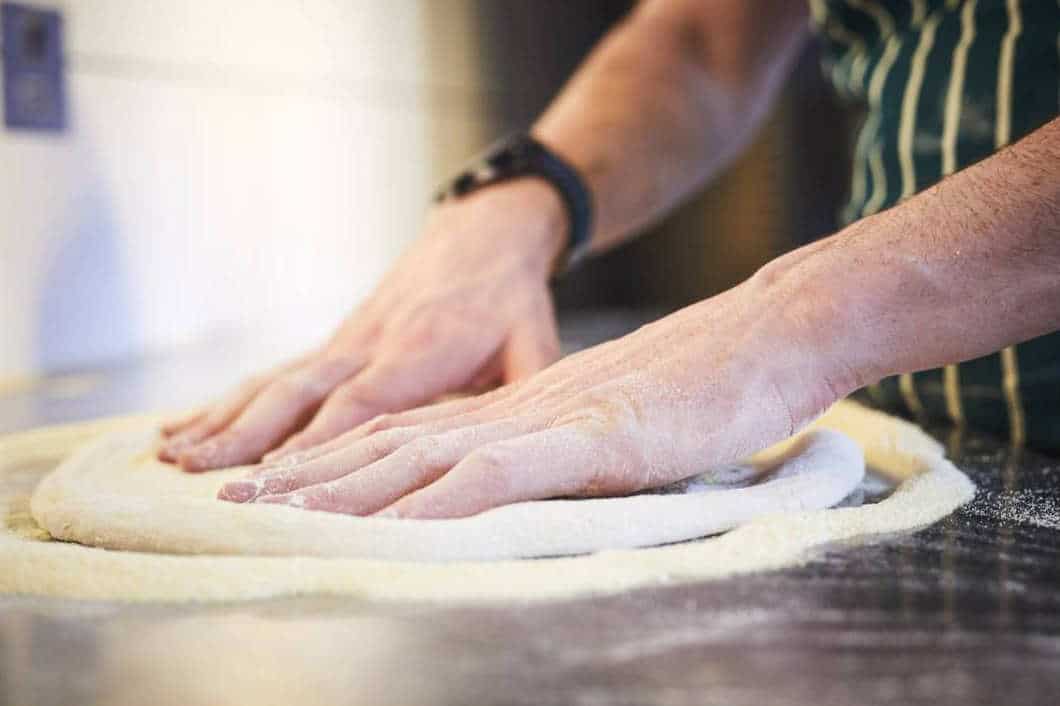
There are three broad types of pizza crust:
- Thin crust: has a delicate dough that cooks very quickly. Usually, the toppings are limited to three to avoid a soggy crust.
- Thick crust: has a chunky base and airy, raised outer edges. A thick crust can hold up to five toppings.
- Deep-dish pizza: has a thicker crust than the two former types. The pronounced height holds hefty toppings. And due to its tall wall, some call it a pie rather than a pizza.
With the notable difference in thickness; comes a specific temperature as well. For thin-crust pizza, the optimal temperature for cooking is 450 to 500 degrees F. Conversely, a thick crust requires a lower temperature (400 degrees F) to ensure that the crust cooks nicely.
Spread the Sauce
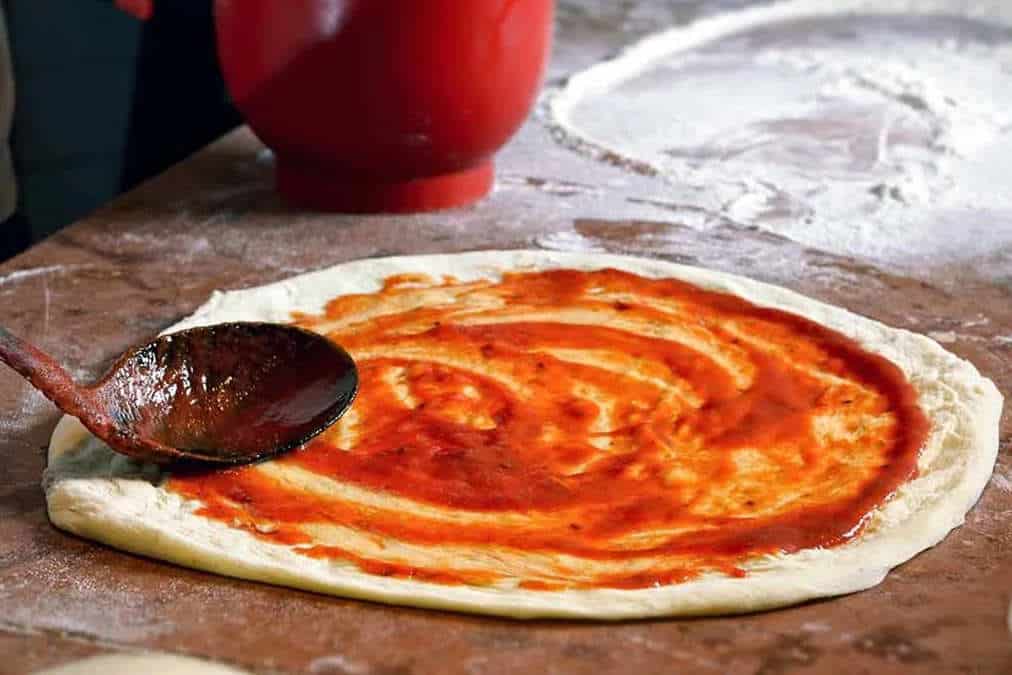
Are you pleased with the form and texture of your pizza crust? If you are, let’s get rolling with the sauce!
There are tons of sauces to choose from to match your favorite topping. Here are some of the highly sought-after pizza sauces for that mouthwatering combination.
- Tomato-Based Pizza Sauce: this is the ultimate go-to sauce that pairs well with any toppings. The flavors are pretty straightforward yet easily customizable.
- Pesto Sauce: this sauce contains shredded herbs, parmesan cheese, and nuts to blend into a delicious mixture. It is also the perfect alternative for a plain cheese pizza if you don’t like tomato-based sauce.
- Alfredo Sauce: this sauce has a flavorous creamy texture that competes well with robust-tasting ingredients. Like pesto, this white sauce pairs amazingly with tons of cheese.
- BBQ Sauce: this sauce has a sweet and tangy flavor that pairs well with any meat you throw on the grill. The best toppings you may try are chicken, bacon, and pineapples.
Have you decided which sauce to use on your homemade pizza?
If you do, get your handy-dandy ladle, and let’s start spreading.
Scoop your choice of sauce and place it in the center of the crust. Create a spiral motion from the middle toward the rim using the bottom of the ladle. But avoid adding sauce on the edges so it develops a puffy crust. Keep the sauce layer thin enough to provide flavor. Too much can result in a soggy-tasting crust.
Sprinkle Cheese
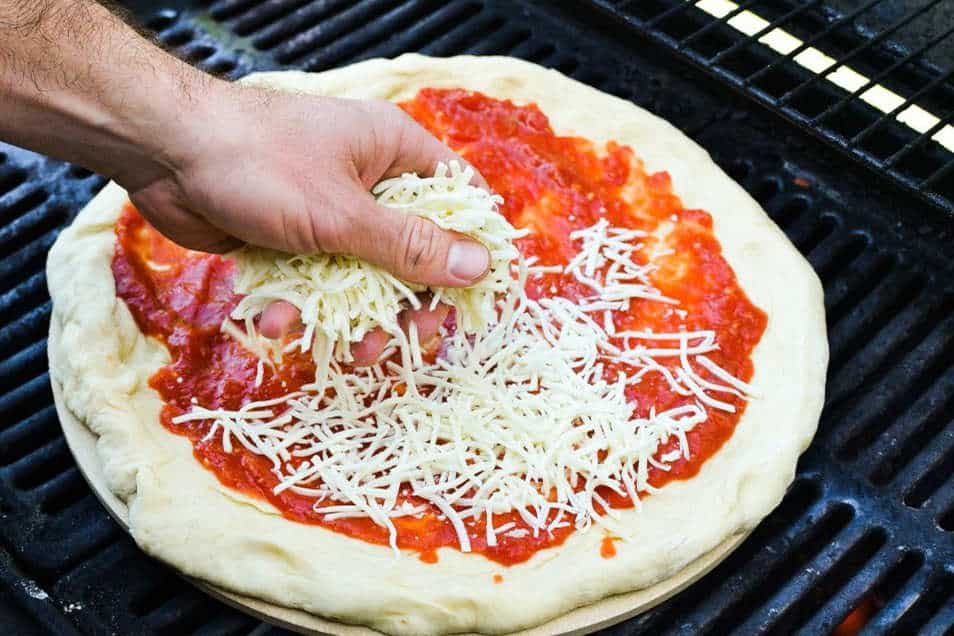
We understand if you love hefty amounts of cheese on your pizza. But don’t get carried away! A disproportionate amount of cheese can cause an overly oily, hard-to-digest pizza. Icky! Although, there is a hack if it’s too hard to resist. Try using low-moisture cheese to dodge a mushy pizza.
To kickstart your pizza making, here are four well-known kinds of cheese you can try:
- Cheddar: has a sharp taste and vibrant color that entices not only the eyes but also the mouth. Often, many avoid using it alone because it does not go well with high heat. But still, it’s a versatile cheese that pairs well with any savory meat toppings.
- Provolone: has a variety of flavors depending on how long it was aged. A shorter aging period develops a sweeter and creamier texture. A longer aging period provides a sharper and dryer consistency. We recommend topping provolone on a Greek or a Louis pizza.
- Mozzarella: is a crowd-pleaser that you’ll find in most pizzas. Due to its high moisture content, it sits on top of the others. Although, you can drain it and let it dry for 20 minutes to reduce the water content.
- Fontina: is a cheese with a strong personality compared to mozzarella. It has a distinct nutty and savory flavor because it is aged longer. But the question is, can you pair it with other cheese? Well, here’s a resounding yes to all our cheese lovers!
After layering the crust with sauce, sprinkle an even layer of cheese. Avoid clumping to allow it to bubble and form a crisp, brown texture.
If you want to know the pizza exceptions where the cheese goes first, keep reading until the end.
Add Your Choice of Toppings
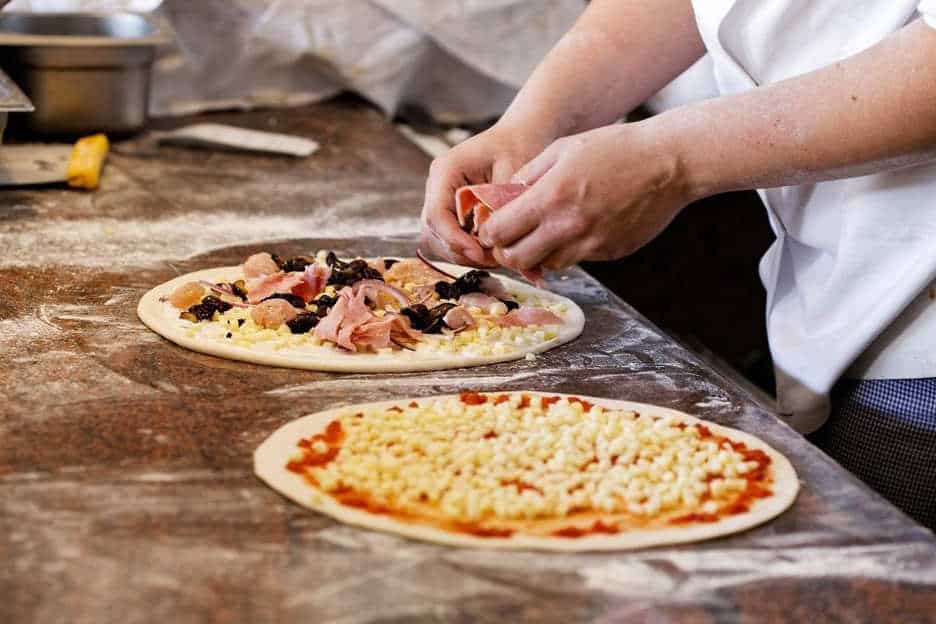
Now onto the most exciting part of pizza making – adding toppings!
Meat and vegetables form the top layer of a pizza. It gets more exposed to heat, searing the toppings perfectly. Do you have a favorite topping combo that is unique and bizarre – like bananas and nuts?
We know how complex food flavor pairing can be. That is why we are laying a guide to keep your pizza-making on track! If you are still puzzled by the taste profiles, here are some classic combinations you can take inspiration from.
| Pizza | Traditional Toppings |
| Supreme Pizza | Pepperoni, sausage, meatballs, green bell peppers, and onions |
| Four Cheese Pizza | Mozzarella, goat cheese, gorgonzola, and parmesan |
| Greek Pizza | Mozzarella, spinach, black olives, tomatoes, red onion, and feta cheese |
| Hawaiian Pizza | Mozzarella, sliced ham, and pineapple |
| Meat Lovers Pizza | Sausage, pepperoni, and bacon |
Get creative and try out different topping combinations. Maybe you will be the next Sam Panopulos of history!
Kidding aside, remember that keeping the toppings minimal is the key to optimal pizza cooking. Also, leave a space between toppings for even cooking of each layer.
With high water content ingredients – like mushrooms – it is ideal to pre-cook them before placing them on the pizza. This rule also applies to vegetables or other ingredients you want to reduce moisture. It does take a while, but it saves you from having an off-putting pizza texture.
Garnish After Baking
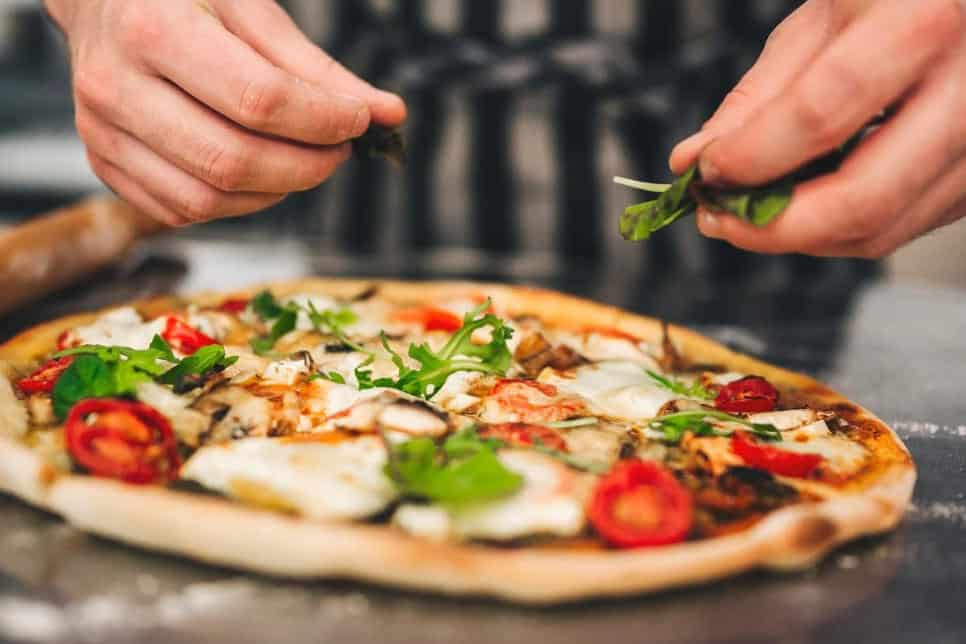
This step cannot be left undone if you want to add pizzazz or extra flavor to your pizza. After baking, you can add fresh vegetables or shredded cheese on top.
But what are the pizza ingredients that are best added after baking? Take a look at these ingredients you can mix and match with your pizza.
- Basil and arugula
- Parmesan cheese
- Prosciutto
- Olive oil
- Red pepper flakes
- Balsamic Vinegar
Basil and arugula are straight-up added raw. No ifs or buts if you want to save it from getting crisp and shriveling. Here’s a tip: wait five minutes before adding it to a newly cooked pizza. This help keep the herbs fresh and prevents curling.
Alike, Parmesan cheese has a delicate flavor that becomes bland when baked. That’s why it only comes on a pizza after baking. Sprinkle some grated parmesan while the pizza is still hot to absorb the extra grease. Now you have layers of cheese dancing on your pizza.
A Few Exceptions When Layering Pizza
While most pizzas follow the classic topping order, some styles have a few exceptions.
Chicago Deep Dish
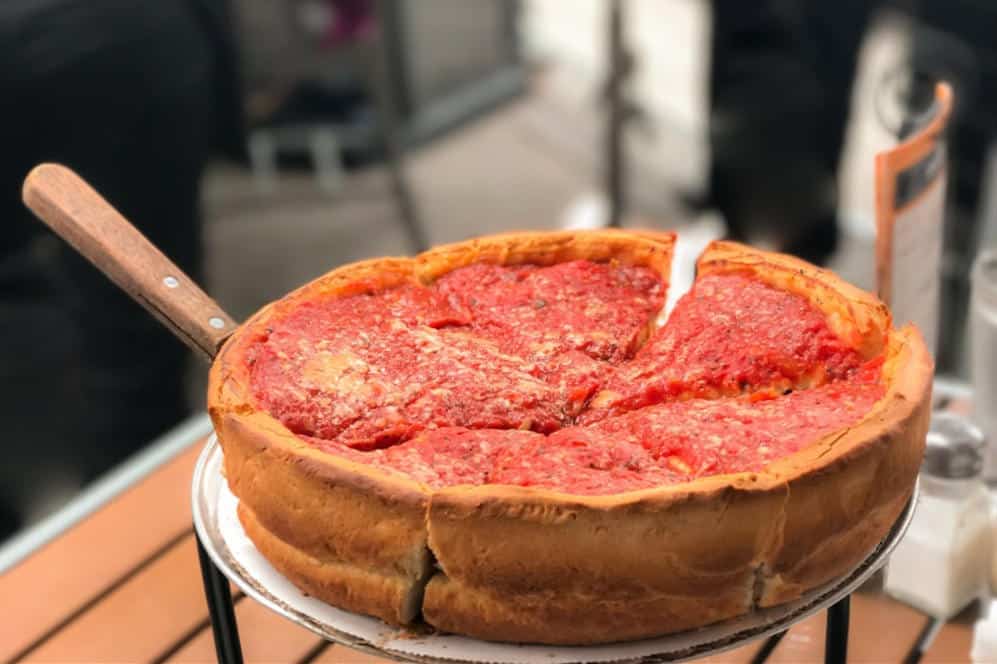
Chicago deep dish is like a pie with tons of cheese and fillings supported by a thick crust wall. Instead of sauce as the first layer, it is covered in mozzarella cheese up the edges.
For the filling, it has a generous amount of sausages and pepperoni. And can you guess the top layer of this pizza style? A handful of freshly squeezed tomatoes! Yum!
Sicilian-Style Pizza
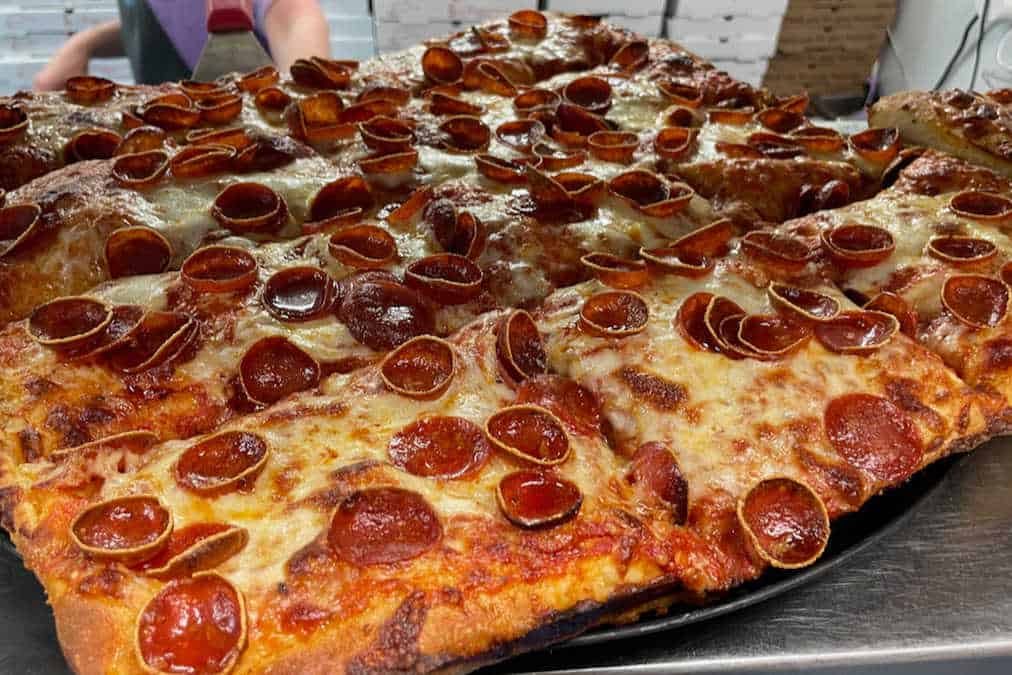
Similar to a Chicago deep dish, Sicilian follows the same layering. But their cooking method is a little bit different. In a Sicilian, the dough is parbaked for a few minutes before being topped with ingredients. After parbaking, the mozzarella, pepperoni, and tomato sauce gather at the top. Then back again at the oven to complete the baking.
Another notable difference is their shape and depth. Sicilian is often square and has a thinner crust than a Chicago deep-dish pizza.
Neapolitan Pizza

Neapolitan pizza, born truly in Italy, features the most simple yet freshest ingredients. The tomato-based sauce with fresh basil covers the crust, then is baked to perfection. While still steaming hot, fresh buffalo mozzarella cheese goes on top – then straight to the plate.
Although it does not follow the usual order, the immediate placement of basil gives a nice Italian touch to the pizza. Placing the cheese right after baking also provides enough topping moisture while maintaining the crisp texture of the crust.
To learn how to create the perfect pizza dough, watch this:
Summary
In a nutshell, there are no strict rules on how to layer the ingredients in a pizza. But knowing the basics gives you an idea of the outcome. Assess your ingredients individually before you layer.
Would this burn immediately? Do I want this ingredient to get charred spots? Is this a high-moisture food? Internally processing the key points can help you arrive at a beautiful homemade pizza. So take chances, and enjoy the results!

Barbara is an enthusiastic food-exploring person that goes through different culinary experiences. She got inspired by creating a pizza blog post after she tasted one of the best-selling pizzas in Toledo.